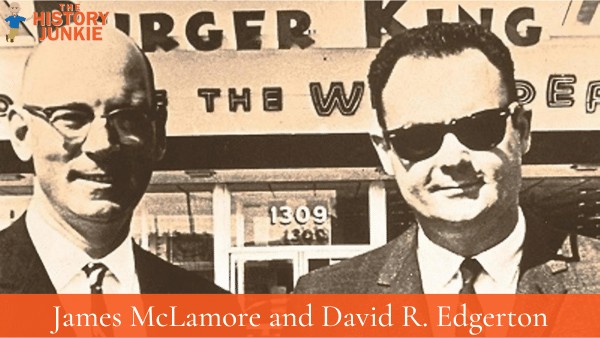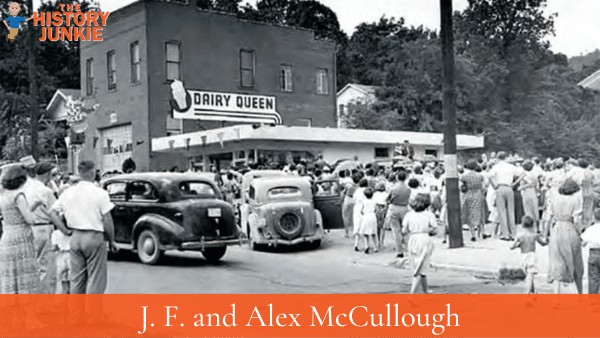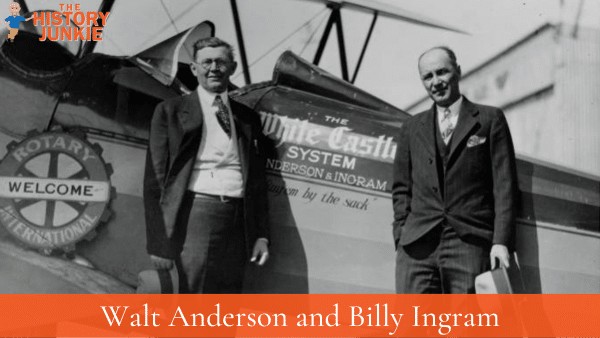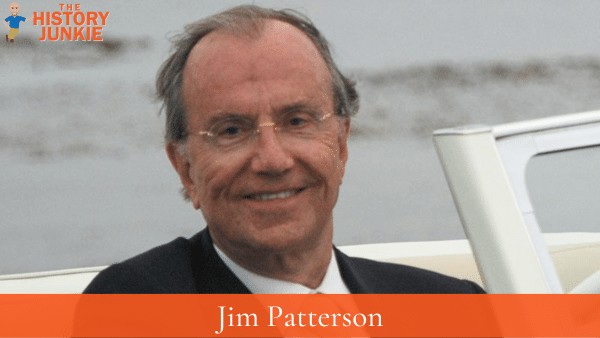Fast Food has become a staple in America, but at the beginning of the 20th century, it did not exist. It would take innovative Fast Food Entrepreneurs to create the industry and, in doing so, change the way America ate.
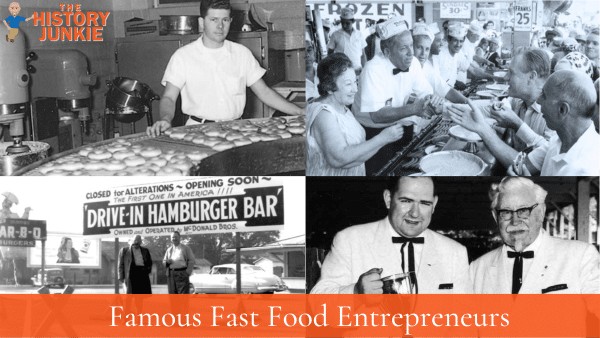
Fast Food became viable with the accessibility of the car and the ability for people to travel the interstates.
White Castle and Nathan's Famous Hot Dogs are two companies listed, and they were the first fast foods to become nationally recognized; both took advantage of economic migration.
Later, after World War 2, more companies began to spring up due to the emergence of the middle class and the interstate highway system. Americans were on the go more than ever and looking for more convenience.
While entrepreneurs such as Andrew Carnegie, John D. Rockefeller, Henry Ford, and Cornelius Vanderbilt are usually recognized for their innovations, these fast-food giants should not be left out.
Jump to:
- 1. Ray Kroc
- 2. Richard and Maurice McDonalds
- 3. Harland Sanders
- 4. Dan and Frank Carney
- 5. Glenn Bell
- 6. Tom Monaghan
- 7. Vernon and Lewis Rudolph
- 8. William Rosenberg
- 9. Fred Deluca and Peter Buck
- #10. Tony Conza, Peter DeCarlo, and Angelo Baldassare
- #11. Nathan Handwerker
- #12. Forrest and LeRoy Raffel
- 13. Dave Thomas
- 14. James McLamore and David R. Edgerton
- 15. S. Truett and Dan Cathy
- 16. Al Copeland
- 17. J. F. and Alex McCullough
- 18. Walt Anderson and Billy Ingram
- 19. Howard Schultz
- 20. Jim Patterson
- 21. Tom Carvel
- 22. Wally Amos
- 23. Ron Shaich
- 24. Debbi Fields
- 25. Steve Ells
1. Ray Kroc
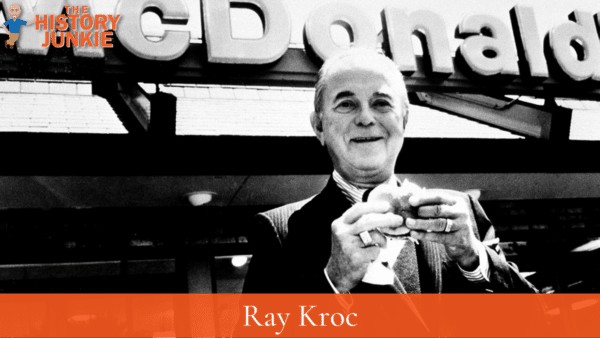
Ray Kroc was a milkshake machine salesman for Prince Castle. When Prince Castle's Multi-Mixer sales plummeted because of competition from lower-priced Hamilton Beach products, Kroc was intrigued by the McDonald brothers, who had purchased eight of his Multi-Mixers for their restaurant in San Bernardino, California. He visited them in 1954.
Also Read: Ray Kroc Family Tree
Ray Kroc made a number of innovative changes in the food-service franchise model, including selling only single-store franchises instead of larger, territorial franchises.
This was a departure from the industry norm at the time, but Kroc believed that it was the best way to ensure uniformity in service and quality among all McDonald's locations.
By granting a franchisee the right to only one store location at a time, Kroc retained for the franchise some measure of control over the franchisee, or at least those desiring to someday own the rights to another store.
Also Read: Ray Kroc Timeline
This allowed Kroc to ensure that all franchisees were held to the same standards and that the McDonald's brand remained consistent across all locations.
Kroc's decision to sell single-store franchises was a major factor in the success of McDonald's. It allowed the company to expand rapidly while maintaining control over its quality standards.
This model has since been adopted by many other fast-food chains, and it is now considered to be the standard for the industry.
In 1961, he bought the company for $2.7 million, calculated so as to ensure each brother received $1 million after taxes. Obtaining the funds for the buyout was difficult due to existing debt from expansion.
Kroc maintained the assembly line "Speedee Service System" for hamburger preparation that was introduced by the McDonald brothers in 1948.
He standardized operations, ensuring every burger would taste the same in every restaurant. He set strict rules for franchisees on how the food was to be made, portion sizes, cooking methods and times, and packaging.
Kroc also rejected cost-cutting measures like using soybean filler in the hamburger patties. These strict rules were also applied to customer service standards with such mandates that money be refunded to clients whose orders were not correct or to customers who had to wait more than five minutes for their food.
2. Richard and Maurice McDonalds
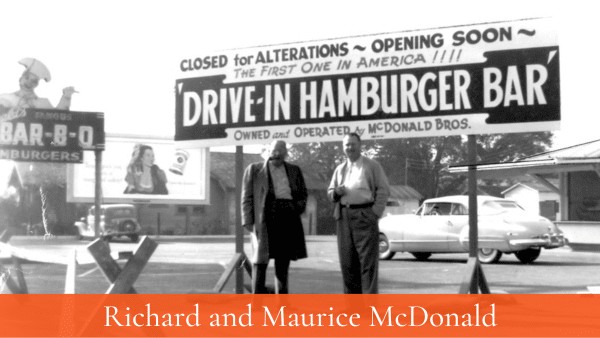
The McDonald brothers were born in New Hampshire and grew up in California. They opened their first restaurant in San Bernardino, California, in 1940. The restaurant was a drive-in, and it featured a limited menu of hamburgers, french fries, and milkshakes.
The McDonald brothers were inspired by the assembly-line efficiency of Henry Ford's factories, and they designed their restaurant to be a fast and efficient way to serve hamburgers. (Nathan's Hot Dogs had also employed an assembly line for hot dogs that they studied.)
They also introduced a number of innovations, such as the use of a Speedee Service System, which allowed customers to order and pay at a counter before their food was cooked.
The McDonald brothers' restaurant was an instant success, and they soon began to franchise their concept.
In 1954, they met Ray Kroc, a milkshake machine salesman who was impressed by their efficiency and business model. Kroc eventually bought the McDonald brothers out and turned McDonald's into a global fast-food chain.
Richard and Maurice McDonald were inducted into the National Restaurant Association's Hall of Fame in 1998. They are considered to be pioneers of the fast food industry, and their legacy continues to this day.
3. Harland Sanders
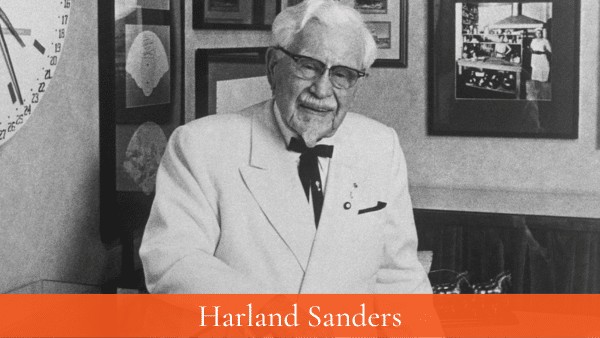
The founder of Kentucky Fried Chicken (KFC) was Harland Sanders, also known as Colonel Sanders. He was born on September 9, 1890, in Henryville, Indiana. Sanders had a long and varied career before he founded KFC.
He worked as a farmhand, a railroad fireman, a lawyer, and an insurance salesman. In 1930, he opened a service station in Corbin, Kentucky, where he began cooking fried chicken for hungry travelers.
His chicken was so popular that he soon opened a restaurant, which he called Sanders' Cafe.
In 1952, Sanders sold his restaurant and began franchising his chicken recipe. The first KFC franchise opened in Utah in 1952, and the company quickly expanded throughout the United States.
By the time of his death in 1980, there were over 6,000 KFC restaurants in over 40 countries.
Sanders was known for his white suit, string tie, and white goatee. He became a popular spokesperson for KFC, and his image was featured in commercials and on packaging for the company's products.
He was also a tireless promoter of his chicken recipe, and he traveled the world giving cooking demonstrations.
4. Dan and Frank Carney
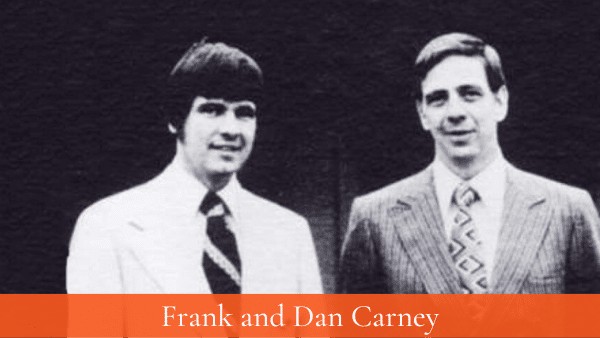
Dan and Frank Carney were two brothers who founded Pizza Hut in 1958 in Wichita, Kansas.
Dan was 26 years old, and Frank was 20 years old when they opened the first Pizza Hut restaurant. They borrowed $600 from their mother to start the business.
They named their restaurant Pizza Hut because the building they rented had a shape that resembled a hut, and they had a sign that could only have eight letters.
Pizza Hut was an instant success. The brothers sold their first pizza on opening night, and the restaurant quickly became a popular hangout for college students.
In 1959, the Carney brothers franchised their first Pizza Hut restaurant. The company grew rapidly, and by 1977, there were over 4,000 Pizza Hut restaurants in the United States.
In 1977, the Carney brothers sold Pizza Hut to PepsiCo for $300 million. The brothers remained with the company for several years, and Frank served as president of Pizza Hut until 1980.
Dan and Frank Carney are credited with revolutionizing the pizza industry. They were the first to franchise a pizza restaurant, and they helped to make pizza a popular food item in the United States.
The Carney brothers are also known for their innovative marketing techniques. They were the first to use television advertising to promote pizza, and they also created the Pizza Hut buffet.
5. Glenn Bell
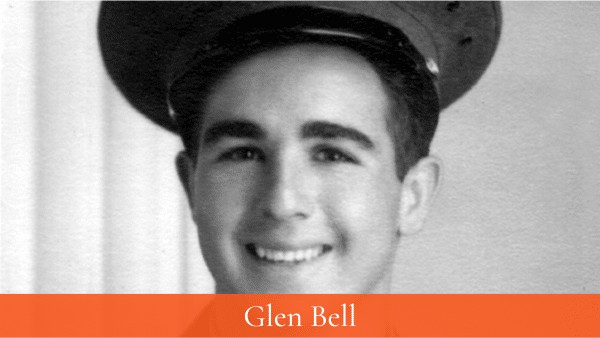
Glen Bell was an American entrepreneur who founded the Taco Bell chain of restaurants. He was born on September 3, 1923, in Lynwood, California. Bell began his career in the restaurant industry in the early 1950s, opening a hamburger stand called Bell's Drive-In. In 1954, he opened his first taco stand, Taco Tia.
Bell was inspired to create Taco Bell after visiting a Mexican restaurant in San Bernardino, California. He was impressed by the flavors of the food, and he decided to create a fast-food version of Mexican cuisine.
In 1962, Bell opened the first Taco Bell restaurant in Downey, California. The restaurant was an immediate success, and Bell soon began franchising his concept. By the early 1970s, there were over 1,000 Taco Bell restaurants in the United States.
In 1978, Taco Bell was acquired by PepsiCo for $125 million. Bell remained with the company as a consultant until his retirement in 1984.
Bell died on January 16, 2010, at the age of 86. He was a pioneer in the fast-food industry, and his legacy continues to this day.
Taco Bell is now one of the largest fast-food chains in the world, with over 7,000 restaurants in the United States and over 30 other countries.
Bell was a visionary entrepreneur who saw the potential of Mexican cuisine in the American market. He was also a shrewd businessman who was able to build a successful fast-food chain from the ground up.
His legacy is one of innovation and entrepreneurship, and he is considered to be one of the most important figures in the history of the fast-food industry.
6. Tom Monaghan
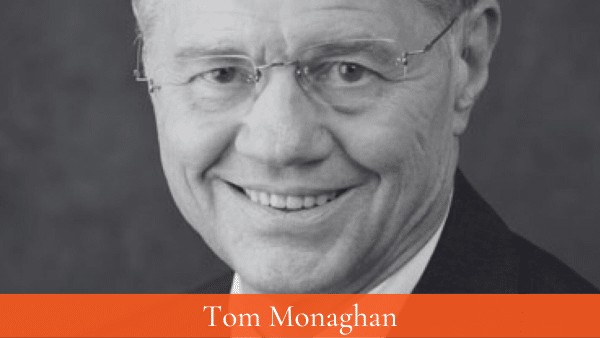
The Monaghan brothers were both born in Ann Arbor, Michigan. They grew up in a poor family, and their father died when they were young.
In 1960, the brothers borrowed $900 to purchase a small pizza store called DomiNick's in Ypsilanti, Michigan. They renamed the store Domino's Pizza in 1965.
Tom Monaghan became the sole owner of Domino's Pizza in 1967 after buying out his brother's share. He grew the company into a global fast-food chain, and he was named Time magazine's "Man of the Year" in 1989.
Tom's primary innovation was his delivery system. When he realized he could not keep up with demand at a small store, he decided to deliver the food to his customers. He reduced his menu size, which allowed for more efficiency, and began promising delivery in 30 minutes or less.
He was approached by the Carney brothers, who wanted to buy him out, but decided against it and continued with his company. His company grew to become the largest chain in the United States.
James passed away, but Tom is alive and well. He is now a philanthropist who gives to many causes that he believes in. He is a devout Catholic.
7. Vernon and Lewis Rudolph
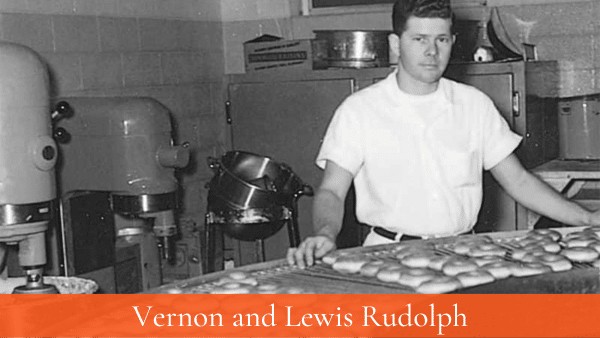
The Rudolph brothers, Vernon and Lewis, were the co-founders of Krispy Kreme Doughnuts. Vernon was the older brother, and he was the driving force behind the company's early success.
Lewis was more of a behind-the-scenes operator, but he was also instrumental in the company's growth.
The Rudolph brothers were born in Kentucky, and they grew up in a poor family. Their father died when they were young, and their mother struggled to make ends meet.
However, the brothers were determined to succeed, and they eventually found their way into the restaurant business.
In 1933, Vernon's uncle, Ishmael Armstrong, bought a secret yeast-raised doughnut recipe from a New Orleans chef. Vernon and Lewis saw the potential of the recipe, and they convinced their uncle to let them sell the doughnuts door-to-door.
The doughnuts were a hit, and the brothers soon opened their own doughnut shop in Paducah, Kentucky.
In 1937, the brothers moved to Winston-Salem, North Carolina, and they opened their first Krispy Kreme shop. The shop was an immediate success, and the brothers soon began franchising their concept.
In order to create consistency with the donut, Vernon pioneered a new automation system that remains the standard today and allowed for mass production.
By the early 1970s, there were over 300 Krispy Kreme shops in the United States.
Vernon Rudolph died in 1973, but Lewis continued to run the company until his retirement in 1985.
Today, Krispy Kreme is one of the most popular doughnut chains in the world, and it is still owned by the Rudolph family.
8. William Rosenberg
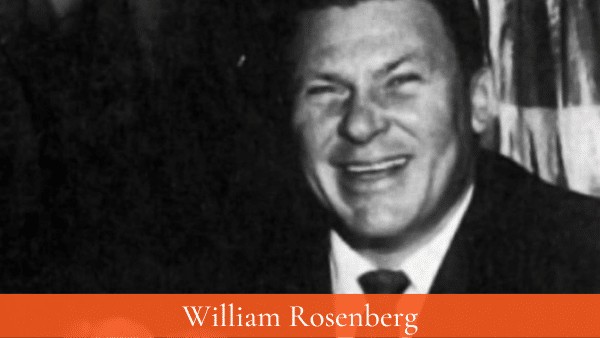
William Rosenberg started his career in the restaurant industry in the early 1940s, working as a soda jerk and a short-order cook. In 1948, he opened his first coffee and doughnut shop, called Open Kettle, in Quincy. The shop was a success, and Rosenberg soon began franchising his concept.
In 1950, Rosenberg changed the name of his shop to Dunkin' Donuts. The new name was inspired by the fact that the shop's doughnuts were made fresh every day.
Dunkin' Donuts quickly became one of the most popular doughnut chains in the United States.
Rosenberg served as chairman of Dunkin' Donuts until 1983. He died on September 22, 2002, at the age of 86. He was a pioneer in the fast-food industry, and his legacy continues to this day.
Dunkin' Donuts is now one of the largest fast food chains in the world, with over 12,000 restaurants in the United States and over 40 other countries.
The company is known for its affordable doughnuts and coffee, and its signature menu items include the Boston Kreme doughnut and the Dunkin' Coffee.
9. Fred Deluca and Peter Buck
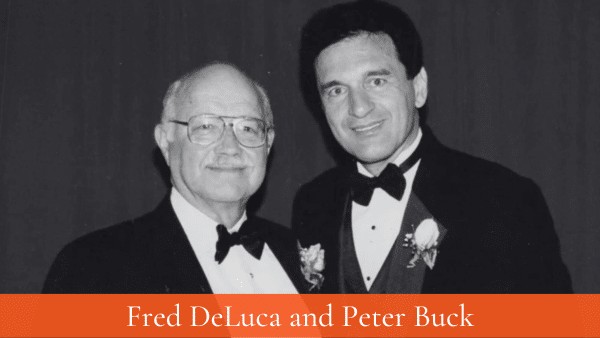
Fred DeLuca and Peter Buck are the co-founders of Subway, the world's largest fast-food chain.
Fred DeLuca was born in Bridgeport, Connecticut, in 1947. Peter Buck was born in Greenwich, Connecticut, in 1939. They met in 1965 when they were both students at the University of Bridgeport.
DeLuca was a pre-med student who was struggling to pay his tuition. Buck was a nuclear physicist who was looking for a business opportunity. They decided to open a submarine sandwich shop together, and they borrowed $1,000 from Buck's uncle to start the business.
The first Subway shop opened in Bridgeport in 1965. The shop was an immediate success, and DeLuca and Buck soon began franchising their concept.
By the early 1980s, there were over 1,000 Subway shops in the United States.
This was due to their innovation of transparency. The United States consumer was looking for a healthier option, and subs seemed to be healthier and were made with fresh meat and vegetables.
Frank and Peter decided to change how they built their sandwiches. They built them in front of the customer, and the customer chose their toppings. This allowed the customer complete control and gave them transparency, which built trust.
Subway continued to grow rapidly, and by the early 2000s, there were over 20,000 Subway shops in the United States. Today, there are over 40,000 Subway shops in over 100 countries, making it the world's largest fast-food chain.
DeLuca served as CEO of Subway until 2002. He died in 2015 at the age of 67. Buck is still involved in the company as a board member.
#10. Tony Conza, Peter DeCarlo, and Angelo Baldassare
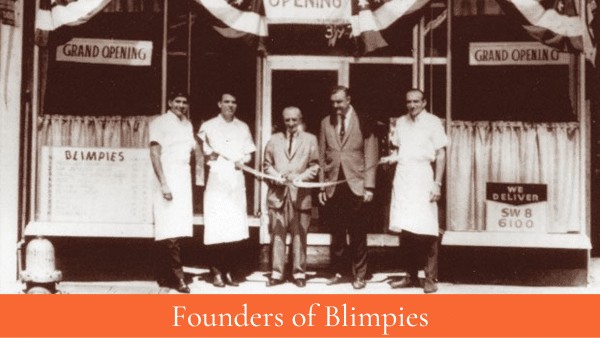
Tony Conza, Peter DeCarlo, and Angelo Baldassare were the co-founders of Blimpie.
Tony Conza was born in Italy in 1934 and immigrated to the United States in 1960. He was a former Wall Street trader who was looking for a new business opportunity.
Peter DeCarlo was born in New Jersey in 1939. He was a former college football player who was looking for a career change.
Angelo Baldassare was born in New Jersey in 1940. He was a former restaurant manager who was looking to start his own business.
The three men met in 1964 when they were all working at a restaurant in Hoboken, New Jersey. They decided to open their own submarine sandwich shop together, and they borrowed $2,000 from Conza's mother to start the business.
The first Blimpie shop opened in Hoboken in 1964. The shop was an immediate success, and Conza, DeCarlo, and Baldassare soon began franchising their concept. By the early 1980s, there were over 1,000 Blimpie shops in the United States.
Blimpie continued to grow rapidly, and by the early 2000s, there were over 2,000 Blimpie shops in the United States. Today, there are over 120 Blimpie shops in the United States and over 30 other countries.
Conza served as CEO of Blimpie until 1990. He died in 2012 at the age of 78. DeCarlo served as president of Blimpie until 1997.
He died in 2009 at the age of 69. Baldassare remained involved in the company until his retirement in 2005.
#11. Nathan Handwerker
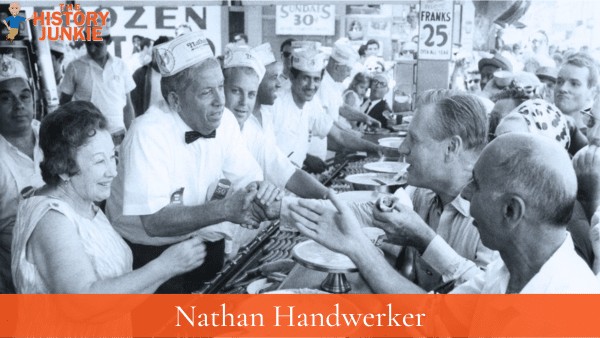
The founder of Nathan's Hot Dogs is Nathan Handwerker. He was born in Poland in 1892 and immigrated to the United States with his family in 1912. He worked as a pushcart vendor in Coney Island, New York, before opening his first hot dog stand in 1916.
Handwerker's hot dogs were a hit with customers, and he soon opened a second stand. In 1921, he entered his hot dogs in the annual Nathan's Famous International Hot Dog Eating Contest. He won the contest, and he went on to win it 13 more times.
Nathan's Hot Dogs became a popular tourist destination, and the company eventually expanded to other locations. Today, there are over 200 Nathan's Hot Dogs restaurants in the United States and around the world.
Nathan Handwerker was a pioneer in the fast food industry. He developed the first food assembly line to make his production more efficient and quicker. The McDonald brothers would visit his hot dog stand and borrow his idea to create their own assembly line called the speedy system.
Nathan never wanted to expand as McDonald's did and was only interested in running his location. However, after his death, Nathans would expand into grocery stores and franchises.
#12. Forrest and LeRoy Raffel
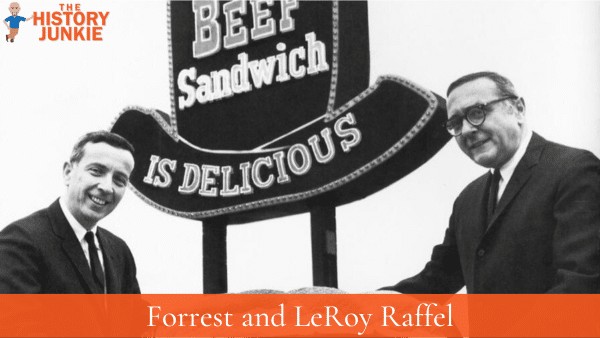
Forrest Raffel was born on May 14, 1922, in Cleveland, Ohio. He was the older of two brothers. He graduated from Cornell University with a degree in hotel and restaurant management.
LeRoy Raffel was born on March 13, 1927, in Cleveland, Ohio. He was the younger of two brothers. He graduated from the Wharton School of Finance at the University of Pennsylvania.
The Raffel brothers were both experienced in the restaurant industry. Forrest Raffel had worked as a manager at several restaurants, and LeRoy Raffel had worked as a consultant to the restaurant industry.
In 1964, the Raffel brothers opened the first Arby's restaurant in Boardman, Ohio. The restaurant was an immediate success, and the Raffel brothers soon began franchising their concept. By the early 1980s, there were over 1,000 Arby's restaurants in the United States.
Arby's continued to grow rapidly, and by the early 2000s, there were over 3,000 Arby's restaurants in the United States. Today, there are over 3,500 Arby's restaurants in the United States and over 10 other countries.
Forrest Raffel served as CEO of Arby's until 1973. He died in 2008 at the age of 86. LeRoy Raffel remained involved in the company until his retirement in 2000. He died in 2023 at the age of 96.
The Raffel brothers were also known for their unique marketing campaigns. In the early days, they would often dress up as cowboys and ride horses into town to promote their restaurants.
They also created the "Arby-Q" contest, which challenged customers to eat a 13-ounce roast beef sandwich in under five minutes.
The Raffel brothers were also known for their commitment to quality. They insisted on using only the highest quality ingredients in their sandwiches, and they were the first fast food chain to use roast beef that was cooked fresh every day.
Arby's is now one of the most popular fast-food chains in the United States. The company is known for its roast beef sandwiches, but it also offers a variety of other menu items, including chicken sandwiches, turkey sandwiches, salads, and milkshakes.
13. Dave Thomas
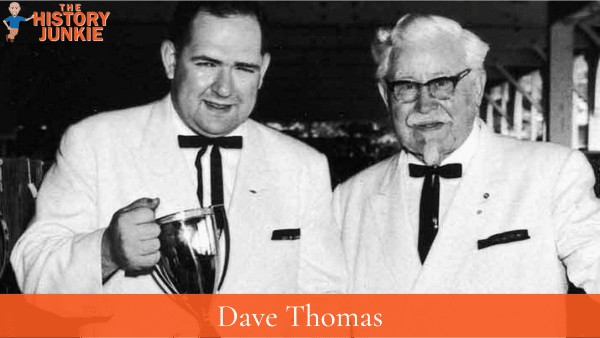
Thomas was born in Atlantic City, New Jersey. He was orphaned at the age of five and raised by his grandparents. He dropped out of high school at the age of 15 to work full-time.
Thomas started his career in the restaurant industry in 1952 when he was hired as a cook at a KFC restaurant. He quickly rose through the ranks and became a manager. His restaurant became one of the most profitable KFCs in the company.
After a disagreement with the company, he moved on to open a new restaurant and focused on fresh hamburgers rather than frozen.
Thomas opened his first Wendy's in Columbus, Ohio, on November 15, 1969. Thomas named the restaurant after his eight-year-old daughter Melinda Lou, whose nickname was "Wendy," stemming from the child's inability to say her own name at a young age.
Dave Thomas resigned from his day-to-day operations at Wendy's in 1982. However, by 1985, the company was struggling. The breakfast menu was not popular, and brand awareness was declining. The new president urged Thomas to return to the company and help turn things around.
Thomas agreed, and he began to visit franchises and talk to employees. He emphasized the importance of hard work and customer service, which he called the "mop-bucket attitude." In 1989, he began appearing in television commercials for Wendy's. He was not a natural actor, and his early performances were criticized as stiff and ineffective.
However, Thomas persisted, and eventually, his commercials became popular. He became known for his catchphrase, "Where's the beef?" and he helped to revive Wendy's.
Dave Thomas became a household name.
14. James McLamore and David R. Edgerton
James McLamore and David Edgerton were the founders of Burger King, which would become the fast-food Burger restaurant to threaten McDonalds.
David Edgerton purchased a Burger place called Insta-burger and thought he could capitalize on an automated system called the Insta-broiler that allowed his workers to pump out 400 hamburgers an hour. The burgers were also broiled, which provided a different flavor.
However, Edgerton struggled with the books and needed a partner who would become the Cornell graduate, James McLamore. McLamore had been paid to learn the McDonald's Speedy System from the McDonald's brothers and would look up to Ray Kroc.
When McLamore opened the books, he realized that Edgerton was losing money in every order. He decided to invest in the business, went against popular thought, and opened more locations.
The partners discovered that the insta-broiler units' heating elements were prone to degradation from the drippings of the beef patties. The pair eventually created a mechanized gas grill that avoided the problems by cooking the meat patties in a different way inside the unit.
The new cooking appliance, which they called a flame broiler, moved the patties over the flame vertically on a chain link conveyor over the heating elements, a design that imparted grill lines on the patties similar to those made on a charcoal grill.
The new unit worked so well that they made the decision to replace all of their Insta-Broilers with the newly designed unit.
They would then change the name to Burger King and develop a signature sandwich called the Whopper. This would start to threaten McDonald's dominance and cause Ray Kroc to take notice.
While the two men never overtook McDonald's, they did become the second-largest fast-food burger chain. They were one of the first to use television advertising to promote their burgers.
15. S. Truett and Dan Cathy
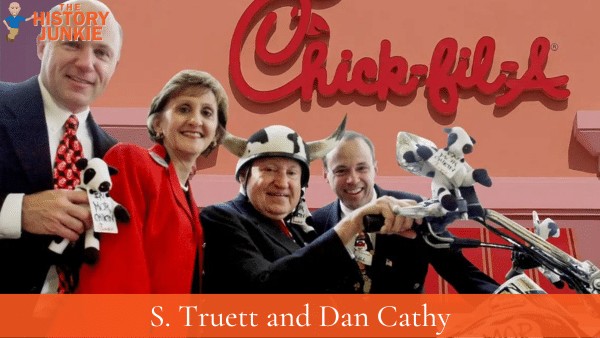
S. Truett Cathy was born on March 2, 1921, in Hapeville, Georgia. He was the son of a restauranteur and began working in his father's restaurant at a young age.
In 1946, Cathy opened his own restaurant, The Dwarf Grill, in Hapeville. The restaurant was an immediate success, and Cathy soon began franchising his concept. In 1967, Cathy changed the name of his restaurant to Chick-fil-A.
Chick-fil-A continued to grow rapidly, and by the early 2000s, there were over 1,000 Chick-fil-A restaurants in the United States. Today, there are over 2,500 Chick-fil-A restaurants in over 40 states.
Cathy served as CEO of Chick-fil-A until 2001. He died in 2014 at the age of 93.
Cathy was a visionary entrepreneur who saw the potential of the fast food industry. He was also a devout Christian who instilled his faith in his business. Chick-fil-A is known for its commitment to customer service, and it's closed on Sundays policy.
Dan Cathy is the son of S. Truett Cathy and the current CEO of Chick-fil-A. He was born in 1961 and graduated from Georgia Tech with a degree in business administration.
Dan Cathy joined Chick-fil-A in 1979 and worked his way up the ranks of the company. He was named CEO in 2001.
Dan Cathy has continued to grow Chick-fil-A into one of the most successful fast-food chains in the world.
As of right now, Chick-Fil-A is known for its great customer service and speed. While they do not have as many locations, their locations are the fastest and best quality of all other fast foods.
16. Al Copeland
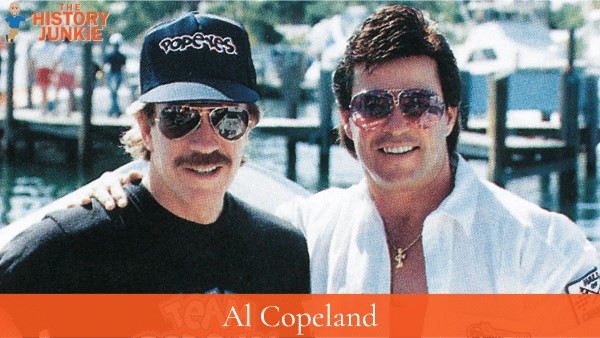
Al Copeland was an American businessman who founded the Popeyes Louisiana Kitchen fast food chain. He was born on February 2, 1944, in Jackson, Mississippi.
Copeland began his career in the restaurant industry in the early 1960s, working as a manager at Howard Johnson's restaurant. In 1972, he opened his first Popeyes restaurant in New Orleans. The restaurant was an immediate success, and Copeland soon began franchising his concept.
Popeyes continued to grow rapidly, and by the early 1980s, there were over 1,000 Popeyes restaurants in the United States. Today, there are over 2,700 Popeyes restaurants in over 30 countries.
Copeland served as CEO of Popeyes until 1993. He died in 2008 at the age of 64.
Copeland was a visionary entrepreneur who saw the potential of the fast food industry. He was also a shrewd marketer who was able to build a successful fast-food chain from the ground up. His legacy is one of innovation and entrepreneurship, and he is considered to be one of the most important figures in the history of the fast-food industry.
Popeyes is known for its spicy chicken sandwiches and its Cajun-inspired menu. The company has been credited with popularizing spicy chicken sandwiches in the United States.
Copeland was also a flamboyant personality who was known for his outlandish costumes and his flamboyant lifestyle.
17. J. F. and Alex McCullough
History of Dairy Queen: In 1938, near Moline, Illinois, J.F. McCullough and his son, Alex, developed the delicious dairy product millions have come to know as Dairy Queen soft serve.
The McCulloughs' innovation was the beginning of today's system of more than 5,700 Dairy Queen and Dairy Queen/Brazier stores in the United States, Canada, and many other countries in Europe, Central America, the Far East, and the Middle East.
The McCulloughs arranged to test their new product in an ice cream retail shop in Kankakee, Illinois, owned by Sherb Noble. Noble held an "All You Can Eat for 10 Cents" sale on August afternoon. More than 1,600 people lined up to try the new treat, and the McCulloughs knew they had an exciting business opportunity.
All they needed now was an efficient way to dispense their soft serve product -- and they soon located a freezer, invented by Harry Oltz of Hammond, Indiana, which could produce a continuous flow of the product. J.F. McCullough often referred to the cow as "the queen of the dairy business".
Thus, the Dairy Queen name originated. The first Dairy Queen store, owned by Noble, opened in 1940 in Joliet, Illinois.
Today, there are over 5,700 Dairy Queen stores throughout the world and Dairy Queen is much more than a single product.
Dairy Queen is a place where a variety of products are sold including not only our DQ soft serve products but also the Brazier line of hot foods. Dairy Queen is the largest seller of soft frozen dessert products in the world. (Information from Dairy Queen's Website)
18. Walt Anderson and Billy Ingram
Before McDonald', Burger King, and Wendy's became the name for burgers, there was White Castle.
The founders of White Castle were Walter Anderson and Edgar Waldo "Billy" Ingram. They opened the first White Castle restaurant in Wichita, Kansas, on September 13, 1921.
Anderson was a cook who had been running food stands in Wichita since 1916. He was looking to open a fourth location when he met Ingram, an insurance and real-estate man. The two men decided to partner up and open a hamburger restaurant.
They named the restaurant White Castle after the White Castle Inn, a hotel in Wichita that was known for its white turrets. The restaurant's menu featured small, square hamburgers that were sold for five cents each. These hamburgers were dubbed "Sliders" because they were so easy to eat.
White Castle was an instant success. The restaurant's small hamburgers were a hit with customers, and the chain quickly expanded throughout the Midwest. By the 1930s, there were over 100 White Castle restaurants in operation.
Often forgotten with White Castle was the standard of cleanliness and consistency they set at a time when many viewed hamburgers as unclean food. Ingram synchronized uniforms, put his staff through a two-week training to maintain consistency, and made sure the staff was held to a high standard of hygiene. Many of these standards are still used today.
Walt Anderson would take a step back to pursue a passion in aviation while Ingram would continue the company and innovate the newspaper coupon that would sell a bulk number of hamburgers for a cheap price. The saying "Buy 'em by the Sack" came out of this campaign.
White Castle is now the oldest fast-food hamburger chain in the United States. There are over 400 White Castle restaurants in operation, most of them located in the Midwest. The company is known for its small, square hamburgers, which are still sold for five cents each.
White Castle has been credited with popularizing hamburgers as a fast food item. The company's small, square hamburgers were easy to eat and affordable, making them a popular choice for busy people on the go.
19. Howard Schultz
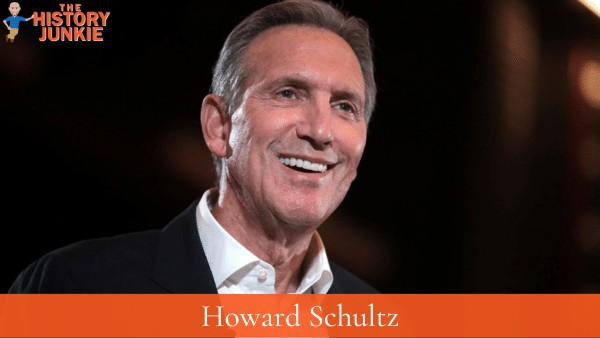
Starbucks was founded in 1971 in Seattle's Pike Place Market. The original store sold fresh-roasted coffee beans, tea, and spices. The name Starbucks was inspired by the classic tale "Moby-Dick."
In 1982, a young New Yorker named Howard Schultz joined the company. He was immediately captivated by Starbucks coffee. In 1983, Schultz traveled to Italy and was inspired by the coffeehouses there.
He returned to Seattle with a vision to bring the warmth and artistry of Italian coffeehouses to Starbucks.
In 1987, Starbucks opened its first coffeehouse. The company quickly expanded to other cities in the United States and Canada.
In 1996, Starbucks opened its first store in Japan. The company continued to expand rapidly, and by 2000, it had stores in Europe and China.
Today, Starbucks is the world's largest coffeehouse chain. The company has over 30,000 stores in 80 countries.
Starbucks is committed to providing its customers with a welcoming and inviting atmosphere where they can connect with others over a cup of coffee.
20. Jim Patterson
The founder of Long John Silver's was Jim Patterson. He was born in 1920 in Lexington, Kentucky. Patterson was a businessman and entrepreneur.
He started his career in the restaurant industry in the early 1950s. He worked for a number of different restaurant chains, including White Tavern Shoppes and Jerry's Drive-In.
In 1969, Patterson partnered with Warren Rosenthal to open the first Long John Silver restaurant in Lexington, Kentucky. The restaurant was named after the fictional pirate Long John Silver from the novel Treasure Island by Robert Louis Stevenson.
Long John Silver's was an instant success. The restaurant chain quickly expanded throughout the United States. By the early 1980s, there were over 1,000 Long John Silver's restaurants in operation.
Patterson served as the president of Long John Silver's until 1984. He then retired from the company. He died in 2006 at the age of 85.
Long John Silver's is still a popular restaurant chain today. There are over 1,100 restaurants in operation in the United States and Canada. The restaurant chain is known for its seafood dishes, such as fish and chips, shrimp, and clams.
Although this part of the article is dedicated to Long John Silvers, Patterson also founded Rally, which has become more successful than Long John Silvers.
21. Tom Carvel
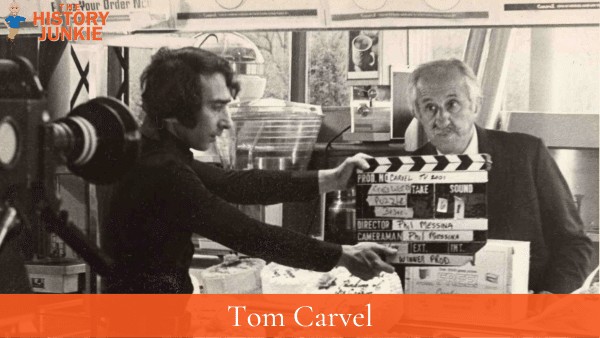
Tom Carvel was an American businessman who founded the Carvel Ice Cream Company, a fast-food restaurant chain known for its soft-serve ice cream.
Carvel was born on July 14, 1906, in Hartsdale, New York. He was the son of a Greek immigrant. He began working in the ice cream business at a young age, working as a delivery boy for an ice cream company.
In 1934, Carvel bought a bankrupt soft-serve ice cream stand in Hartsdale. He renamed the stand Carvel's Frozen Dairy Desserts and began selling soft-serve ice cream. The ice cream was a hit, and Carvel soon began franchising his concept.
By the early 1960s, there were over 100 Carvel stores in the United States. In 1964, Carvel went public.
Carvel's soft-serve ice cream was a unique product at the time. It was made with a special machine that allowed it to be served soft and fluffy. Carvel also introduced several innovative marketing techniques, such as the "Carvel Tunnel of Fudge" and the "Carvel Cake."
Carvel continued to grow rapidly, and by the early 1980s, there were over 500 stores in the United States. Today, there are over 400 Carvel stores in over 10 states.
Carvel served as CEO of Carvel until 1973. He died in 1990 at the age of 84.
22. Wally Amos
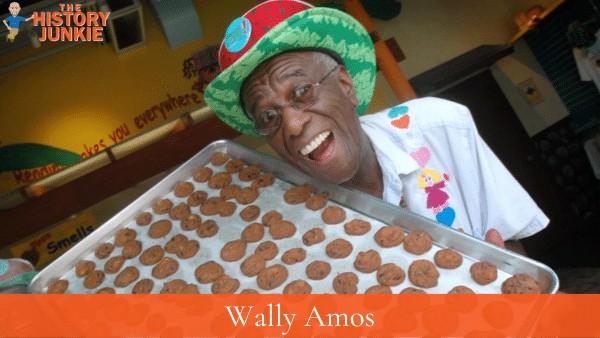
Wally Amos was an American businessman and entrepreneur who founded the Famous Amos chocolate chip cookie company.
Amos was born in Tallahassee, Florida, in 1936. He began his career in the music industry, working as a talent agent for the William Morris Agency. In 1968, he was fired from his job.
After being fired, Amos decided to start his own business. He opened a small cookie shop in Hollywood, California, called the Famous Amos Cookie Company. The cookies were a hit, and Amos soon began franchising his concept.
By the early 1970s, there were over 100 Famous Amos cookie shops in the United States. In 1977, Famous Amos went public.
Amos's cookies were unique at the time. They were made with all-natural ingredients, and they were baked fresh every day. Amos also introduced several innovative marketing techniques, such as the "Famous Amos Cookie Tour" and the "Famous Amos Cookie Book."
Famous Amos continued to grow rapidly, and by the early 1980s, there were over 500 stores in the United States. In 1985, Famous Amos was acquired by the Keebler Company.
Wally Amos is still alive today and resides in South Carolina.
23. Ron Shaich
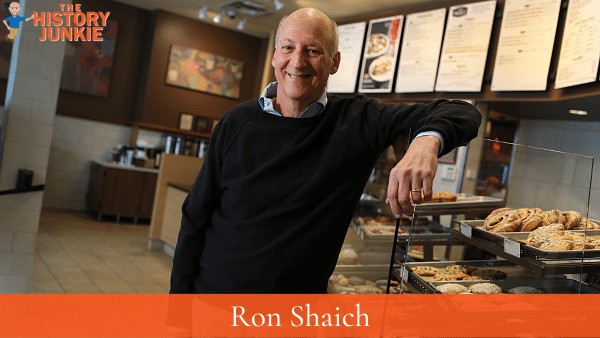
Ron Shaich founded Panera Bread in 1981 as a single cookie shop called The Cookie Jar. He merged the Cookie Jar with a struggling French bakery called Au Bon Pain in 1983. The combined restaurants started selling homemade soups and sandwiches made with freshly baked baguettes.
In 1993, Au Bon Pain Co., a public company, purchased the St. Louis Bread Company (later renamed Panera Bread) for $23 million.
In 1997, Au Bon Pain changed the company name to Panera, from a word that has roots in the Latin word for "breadbasket" and is identical to the word for "breadbasket" in Spanish and Catalan. It kept its original name for locations in Missouri.
JAB Holding Company acquired the company on July 11, 2017, for $7.5 billion. Panera announced on November 8, 2017, that founder Ron Shaich was stepping down as CEO, and company president Blaine Hurst would take over.
Shaich remained chairman. The company also announced the acquisition of Au Bon Pain. Panera divested Tatte Bakery & Café to Act III Holdings, LLC, owned by Shaich, in January 2018. In January 2018, the company formed a consulting business to help restaurants remove artificial ingredients from their menus.
24. Debbi Fields
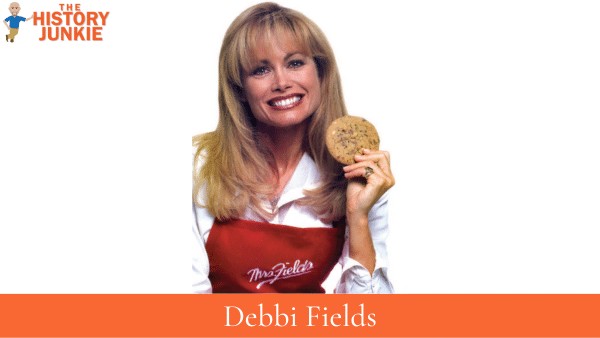
Mrs. Fields Cookies was founded by Debbi Fields in the late 1970s. She and her husband Randy opened their first of many stores in 1977 in Palo Alto, California, selling homemade-style cookies, which quickly grew in popularity. Stalls were located in many U.S. airports and shopping malls.
In 1982, they moved their headquarters to Park City, Utah. In the early 1990s, the company was sold to an investment firm.
During the 1990s, the company acquired several other brands, including Original Cookie Company, Great American Cookies, Pretzel Time, Pretzelmaker, Hot Sam Pretzel Bakery, and TCBY.
In 2007, Mrs. Fields celebrated its 30th anniversary with a national search for a new cookie. Chandler, Arizona resident Carrie Lawrence's recipe for "Oatmeal Peanut Butter Scotchies" was chosen over 700 other recipe entries as Mrs. Fields' 30th Anniversary Cookie in August 2007.
In May 2012, Mrs. Fields announced it was moving its headquarters to the Denver area in Colorado. According to then-CEO Tim Casey, the move was because "Many casual/quick service franchise companies were launched from and are based in Denver, making it an ideal environment for idea sharing."
The company acquired long-standing licensee Maxfield Candy and high-quality nut, dried fruit, and popcorn brand Nutty Guys in Salt Lake City, Utah, on December 24, 2014.
One of the unique parts of Mrs. Fields is the secret recipe.
The above image is from Mrs. Fields Fundraising Page.
25. Steve Ells
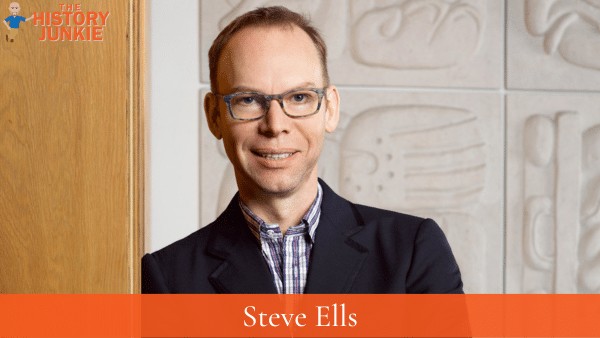
Steve Ells is an American businessman who founded Chipotle Mexican Grill, a fast-food restaurant chain known for its burritos and tacos.
Ells was born in 1966 in East Lansing, Michigan. He graduated from Cornell University with a degree in business administration.
After graduating from Cornell, Ells worked as a sous chef at a number of restaurants in San Francisco. In 1993, he opened the first Chipotle Mexican Grill in Denver, Colorado.
Chipotle was an immediate success. The restaurant offered a unique take on Mexican food, using high-quality ingredients and cooking everything fresh to order.
Chipotle continued to grow rapidly, and by the early 2000s, there were over 100 restaurants in the United States.
Ells has been praised for his commitment to using sustainable and ethical practices in his restaurants. Chipotle was the first major fast-food chain to ban the use of antibiotics in its chicken.
His model borrowed from Subway's concept of sandwiches. The food is made in front of the customer, and the customer has control over what they want on their burrito.
Chipotle is one of the top franchises in the United States.
The image above is from the New York Times.

